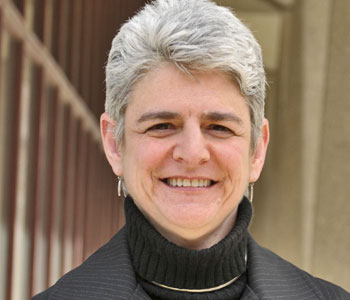Gidon Eshel Planetary Eating: The Hidden Links between Your Plate and Our Cosmic Neighborhood MIT Press 300 pp., 6 x 9 in ISBN: 9780262552141
In a nutshell
Planetary Eating is a very rigorous examination of the mechanisms of human–planet interactions, agriculture and food production, and consumption set in motion. While other books address the environmental problems associated with agriculture, most are qualitative and promote a specific agricultural model, often in rather partisan tones. In other words, they offer a prescription. Yet because the physical constraints agriculture functions within are so diverse, and so variable in time and geographically, no single agricultural model can be reasonably expected to optimally address all of them, and indeed none does. Instead, most of these models are in fact mutually synergistically complementary. To know which agricultural models are best suited for a given scenario, and how they can be optimally deployed to maximize food delivery and nutritional quality while simultaneously minimizing environmental costs, the full suite of physical, biological, and chemical processes that govern agriculture, and their deep planetary roots must be understood. Planetary Eating is the first popular book I am aware of that describes authoritatively these processes and their planetary background in sufficient scientific detail while maintaining accessibility to non-specialist readers who are curious and willing to negotiate the requisite intellectual heavy lifting.
Eshel greeted enthusiastically by the family's rescue dog, Becky, upon returning from a long winter bike ride

The wide angle
The widely divergent views on agriculture, and the wildly disparate organizations whose focus is food systems, share one, and only one, foundational assessment: modern agriculture is broken. What to do about it is where these views and organizations rapidly diverge. Yet all views on the food–agriculture–environment–health nexus can be usefully characterized by their location along a continuum spanned between two apparently diametrically opposite worldviews. The first is the further intensify worldview, advocating yield maximization (i.e., land need minimization) in vast industrial megafarms. Opposite this camp is the reduce impact one, which promotes small, diverse family farms with lower environmental and societal costs, accepting possibly lower yields as well worth the environmental betterment. Both views make sense because both are motivated by well-observed facts: ever-rising population and food demands on the one hand, and destructive environmental and societal impacts of today’s food systems on the other. Yet in head-to-head competitions, the reduce impact paradigm often loses on account of insufficient food delivery, and its proponents are often characterized as impractical, unrealistic dreamers. Crowd wisdom, meanwhile, is more nuanced, recognizing the strength of the production volume argument, but also of the need for mitigating industrial agriculture’s most harmful customs and thus the potential contributions either end member makes. There are deep reasons for this disparity between the objective winner status of the further intensify view and the impractically idealistic moniker of the reduce impact paradigm, and they too require deep appreciation of the physical, biological, and chemical processes that govern agriculture, and their deep planetary roots. This body of knowledge is fundamental to the Earth Sciences writ large (combining theory and observations from geology, geophysics, geochemistry, planetary science, cosmo chemistry, astrophysics, hydrology, meteorology, geomorphology, among other traditional disciplines), and has been ever more coherently unified in the modern Earth Sciences, yet it sadly is almost never brought to bear on the problem of the environmental consequences of food and agriculture, and is not ever united with nutritional sciences, which govern the other key element of agriculture, the quality of the diets its outputs facilitate. Unifying all of the above bodies of knowledge into a single coherent and internally consistent whole is the unique contribution of Planetary Eating.
Planetary Eating is a culmination of a long journey. It started with childhood on a kibutz, an agricultural commune in Israel, in whose dairy farm I worked throughout my middle- and high school years. More an identity than a mere job, the dairy farm work was my all-consuming passion, the pride and joy of my young self. Some years later, I returned to cattle, this time raising beef cattle in northern Israel. After completing my PhD in geophysics at Columbia some 15 years later, and after a few years of doing traditional geophysical research, my two passions—Earth, its processes, and its planetary integrity on the one hand, and agriculture, farming, and ranching on the other—started converging. With the benefit of earth observing satellites, which moved from novelty to commonplace during my early years as a scientist, the uniqueness of agriculture—the only human activity readily visible from space on the sun-facing half sphere—became all the clearer. At the same time, earth science leaders were becoming progressively more appreciative of the vital necessity of transdisciplinary thinking for truly understanding our planet and protecting it from our worst instincts. Consistently, while my efforts to combine agricultural science with geophysics were viewed as peculiar and awkward in the early 2000s, they are now thankfully viewed as almost standard. These shifting winds played a key role in midwifing Planetary Eating into existence.
A close-up
The book’s essence: only facts. My work on the geophysics of food
“…has thrust me into an intense multidimensional public debate. One aspect involves the tension between idealistic, small-scale, “local” agriculture on the one hand, and the currently dominant massively intensive corporate mega-farms on the other. Another very dominant debate centers on beef as either the source of or the cure to all agricultural ills. In keeping with this polarity, my popular writing and media interviews typically receive online comments from individuals that are roughly evenly split between blindingly enlightened, zero-doubt vegan activists, and angry self-appointed beef and big ag defenders. And when I publish papers that suggest that in some circumstances beef may play productive roles, the comments endure, but the camps neatly reverse, like Prussian troops in formation. Such incuriosity rarely begets serious fact- and logic-based inquiry, yet it is sadly common in the public discourse on food, agriculture, and diet. The only standard I have used is a strict adherence to the guiding science—sometimes foundational, sometimes applied—and to veritable, robust observations. I am guided by the (possibly naive) notion that if you just highlight sufficiently clearly, in widely understood language, the foundational, logical, or factual holes in some of the commonly held views, people will listen.”
Food as our primary connector to our solar system neighborhood.
“… Some would associate the beginning of the story with the green revolution, the industrial revolution, colonialism, the European pillaging of the Americas, or the dawn of agriculture in the Fertile Crescent. While clearly important, these are merely recent chapters in a story whose prologue unfolded over 4.5 billion years ago, as our solar system coalesced from clouds of interstellar dust, or earlier still, when that dust acquired its material attributes from earlier generations of long-gone stars. Fundamentally, agriculture builds directly on these processes, which—through nuclear interactions that involve protons and neutrons in atomic nuclei—create the tangible materials around us, and determine their chemical properties. In turn, these shape agriculture, which is nothing but controlled fluxes of energy and mass between various interconnected Earth’s components.
If this seems odd, think about work-performing muscles; are they not fueled by the calories in our food, which are stored solar energy, liberated by nuclear fusion in our star, the sun? Or think of irrigation, the redistribution of water whose mass is about 90% oxygen. Is the oxygen nucleus not four helium nuclei, fused together in stellar interiors?”
On my non-traditional upbringing.
“I grew up on the ocean, the son of a ship captain. For most of my childhood, my older sister Tami was the only fellow child I knew, and we shared a diminutive cabin with our parents on an old, small ship. For Tami and me, schooling, such as it was, constituted an unusually lax one-woman Department of Education our mother ran, intermittently, on board. With months at sea at a stretch, and neither formal education nor any structured commitments to avert suffocating boredom, we became consummate self-educators.
The natural world I witnessed from the ship was what truly captivated me. Nature grabbed hold of me and never let go. What turned the lazy green-brown waters of the sheltered Elbe River, I wondered, into a gray tempest upon departing Antwerp into the North Sea? Why did the still Malmo fog give way to glassy ice as we crossed the Baltic Sea southward, toward the Kiel canal and ultimately Hamburg? Why are the eastern Adriatic waters gin-clear, while approaching Venice, just 100 miles away, is like floating on coffee?
Decades later, working with two titans of modern fluid physics, Mark Cane at Columbia and Brian Farrell at Harvard, all these maritime experiences gradually cohered into a unified story, finally allowing me to turn basic observations of the natural world into a crisp scientific construct.”
On rebellion cuisine (following a salad recipe).
“Not merely delightful, our salad is a political statement that, like lunch counter sit-ins, sends a clear message that we hereby resign our assigned role in the farce, because it sickens us, in more ways than one.
To be adapted widely enough for success, rebellion cuisine must be—like our salad—delicious, affordable, healthy.
We do not need chefs’ environmental musings because they tend to be too scientifically naïve to be useful, and the price tags of the food they promote are laughable. Instead, we need good, honest cooks who develop and perfect affordable, healthy recipes that are poised to become highly popular. While experience shows it can be done, it often isn’t. Such food has been ubiquitous and cheap in any Middle Eastern town, continuously and unfailingly, through droughts and deluges, since well before Jesus was born there. Are the people of the US, France, or Germany so fundamentally less discerning than the denizens of these bygone towns?!
Which brings us to the final pillar of rebellion cuisine, health. This salad and similar meals will, statistically speaking, extend your life and reduce disease during those longer years. As this book has shown in excruciating detail, all the health-related notions invoked to promote the necessity of animal products are houses of empirical cards.
If you, like countless others, are disillusioned with our food system, here is a delicious, practical alternative to its compromised output. Not only is our salad tastier and nutritionally and environmentally far superior, it puts agribusinesses on notice that continuing to promote disease and environmental degradation requires finding a new population to undermine, because we choose life over agribusiness's bottom line, health over elective degenerative disease, and actual planetary betterment over the vacuous environmental platitudes these businesses typically promulgate.”
Lastly
I wrote Planetary Eating with the hope that it would replace unfounded, unscientific thinking and gratuitous assertions in the conversation on the confluence of food, agriculture, the environment, and public health. I was also hoping it would disabuse readers of the false notion that one can discuss knowledgably and learnedly these confluences while disregarding or paying scant attention to planetary science. As I see it, agriculture is planetary science by another name; how can you hope to speak cogently of agriculture, therefore, while choosing to remain minimally educated at best about planetary science?!





